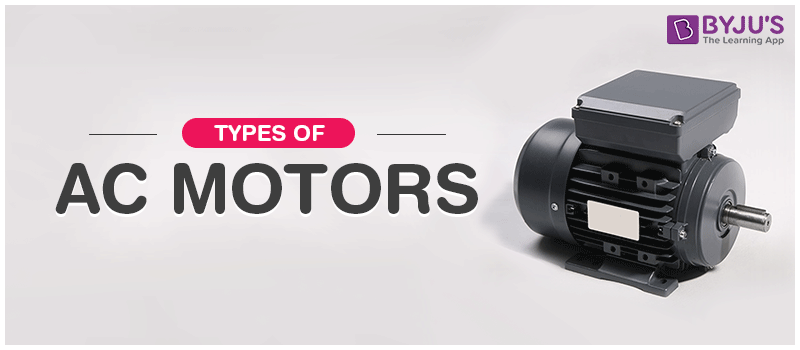
In the modern era, electricity and electrical equipment play a vital role. Without them, it is hard to imagine a life. One such electrical device that resulted in a giant leap for mankind is the motor. Among motors, the usage of AC motors is much more prevalent than DC motors. Various types of AC motors are used for a variety of applications in everyday life. AC motors are classified into different types depending on their specifications. The classification of AC motors is explained in the next section.
Classification of AC motors
The AC motor classification based on several parameters is given below in detail:
AC Motors classification based on Principle of Operation:
- Synchronous Motors
- Plain
- Super
- Asynchronous Motors
- Induction Motors
- Squirrel Cage
- Slip-Ring
- Commutator Motors
- Series
- Compensated
- Shunt
- Repulsion
- Repulsion induction
- Repulsion-start induction
AC Motors classification based on Type of Current
- Single Phase
- Three Phase
AC Motors classification based on Speed of Operation
- Constant Speed
- Variable Speed
- Adjustable Speed
AC Motors classification based on Structural Features:
- Open
- Closed
- Semi-enclosed
- Ventilated
- Pipe-ventilated
- Riveted Frame-eye
But, AC Motors are classified into two types:
- Synchronous Motor
- Induction Motors
A flowchart for the classification of AC motor is given below:

A description of each type of AC motor is given below:
Synchronous Motors
The rotational speed of the stator current is equal to the rotational speed of the rotor. They don’t have a slip with respect to stator current.
Asynchronous Motors
These motors slip with respect to the stator current field. They are used in different varieties of pumps etc.
Single Phase and Three Phase Motors
Single-phase motors are used in domestic appliances. Three-phase motors are used in high-power appliances.
Constant,Variable & Adjustable Speed Motors
- Flexible for controlling speed.
- Constant speed is performed in air compressors.
- Cooling pumps can function at variable speeds by making a switch in the number of poles used. Changing the number of poles results in speed change.
- Motor’s speed can also be changed accordingly with some electronic arrangements, which are ideal for the ship’s cargo pump where the discharge rate needs to be lowered as per the requirement of the tunnels.
Varied Structure Motors
Depending upon the industrial requirements, motors have a variety of outer cage arrangements. For example, motors that are used in oil and gas terminals should have safely enclosed casing to prevent sparks produced in the motor from causing fire outside of it.
These were some types of AC motors if you wish to know more, download BYJU’S The Learning App
RELATED ARTICLES:
| Difference between AC and DC motors | The Electric Motor |
Faraday’s Law of Electromagnetic Induction Explained


Comments